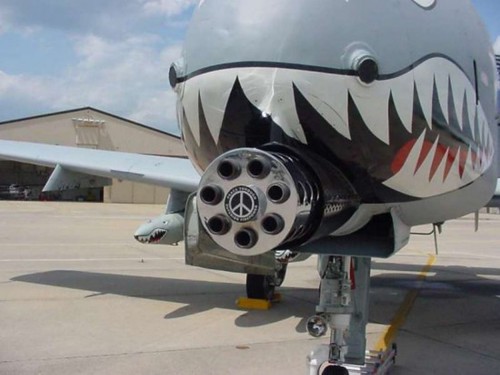
From Fox News: A casino barge washed ashore near Biloxi, MS.
The cable news networks and the internet are providing the best coverage of the unfolding disaster on the Gulf Coast.
A helicopter flyover (shown on MSNBC) around Biloxi, Mississippi, shows almost total destruction, with smashed homes and denuded trees stretching as far as the camera can see. Storm surge reached several miles inland, destroying homes, businesses, and bridges. One scene showed a long viaduct which had lost every single span. Farther down the Mississippi coast, a barge which had lain moored in the Gulf of Mexico now lay beached, inland of the coastal highway which was still passable.
In Mobile, Alabama, cleanup is beginning from the storm surge flooding that occurred there, but it appears that while serious, the damage is repairable, and losses comparatively light.

In New Orleans, chaos reigns. Reports of widespread looting and general lawlessness are common, and a dire need to continue search and rescue operations means that looting will continue for some time. It is rumored that the Lousiana governor will be asking for federal troops to assist in maintaining law and order.
Breaking New Orleans News: WWL-TV.
Looting continues in New Orleans
09:19 AM CDT on Wednesday, August 31, 2005 - Associated Press
Looting broke out in some New Orleans neighborhoods today, prompting authorities to send more than 70 additional officers and an armed personnel carrier into the city.
Police say one officer was shot in the head by a looter yesterday, but is expected to recover.
The Times-Picayune reports today that a Wal-Mart in the Lower Garden District was looted, and the entire gun collection was taken.
Terry Ebbert, New Orleans Homeland security chief, says there are gangs of armed men moving around the city. Also, the governor's office reports looters tried to break into Children's Hospital.
On New Orleans' Canal Street, dozens of looters ripped open the steel gates on clothing and jewelry stores and grabbed merchandise. In Biloxi, Mississippi, people picked through casino slot machines for coins and ransacked other businesses.
In some cases, the looting was in full view of police and National Guardsmen.
(Copyright 2005 by The Associated Press. All Rights Reserved.)
There has been little news from anywhere else in southern Louisiana. All Louisiana eyes appear to be on New Orleans.
The prospects of the Crescent City appear to be dismal.
An interview with the Army Corps of Engineers:
Answers from Army Corps of Engineers on unwatering New OrleansMore Information:
11:28 PM CDT on Tuesday, August 30, 2005
Q.1. How long will it take to get the water out of New Orleans?
A.1. We are unsure. A number of factors play into this. First, Lake Pontchartrain is at roughly 4.5 feet above sea level and falling. The city is at a lower elevation so water will continue to flow into it until it equalizes.
Once the breach on the 7th Street Canal is closed, Pump Station 6 can pump 10,000 cubic feet per second.
Once the breaches are closed and all of the pumps are running, the pumps can lower the water level ½ inch per hour or about a foot per day. We can get the water level to sea level in four and a half days. The ½ inch rate assumes the late is at normal levels. That would create pumping inefficiency, as could trash in drains and canals that feed into the pump stations.
That’s a “Best Case” scenario. We don’t know the conditions of all of the pumps. Fortunately most of the pump motors and controllers are at an elevation greater than 5 feet and we hope they weren’t submerged. There could be other unforeseen problems.
We assume the pumps have not been submerged since most pumps are at an elevation greater than five feet above sea level. Pumps are operated and maintained by the local sewage and drainage districts.
Q.2. Why did the levees fail?
A.2. What failed were actually floodwalls, not levees. This was caused by overtopping which caused scouring, or an eating away of the earthen support, which then basically undermined the wall.
These walls and levees were designed to withstand a fast moving category 3 hurricane. Katrina was a strong 4 at landfall, and conditions exceeded the design.
Q.3. Why only Category 3 protection?
A.3. That is what we were authorized to do.
Q.4. How many other areas do you need to get water out of?
A.4. There are at least five ringed levees (areas surrounded by levees) that need to be emptied. New Orleans and Jefferson; New Orleans to Venice (Hurricane Protection project - Port Sulfur to Venice, LA); Chalmette Loop (lower 9th ward of Orleans Parish and Urbanized part of St. Bernard Parrish ); and, Plaquemines Parish non-federal levees have also been overtopped.
Q.5. What will be done to unwater these areas?
A.5. The unwatering plan will be used in these areas as well. Crews and equipment will be mobilized to breach the levees at predetermined locations and allow for gravity drainage into Lake Bourgne or other surrounding water bodies.
For more information, contact the New Orleans District Public Affairs Office at the crisis action center (601) 631-5328. Please also visit the New Orleans District website (www.mvn.usace.army.mil) -- it's up once again.
NOLA.com
WWL TV, New Orleans
MichelleMalkin.com












